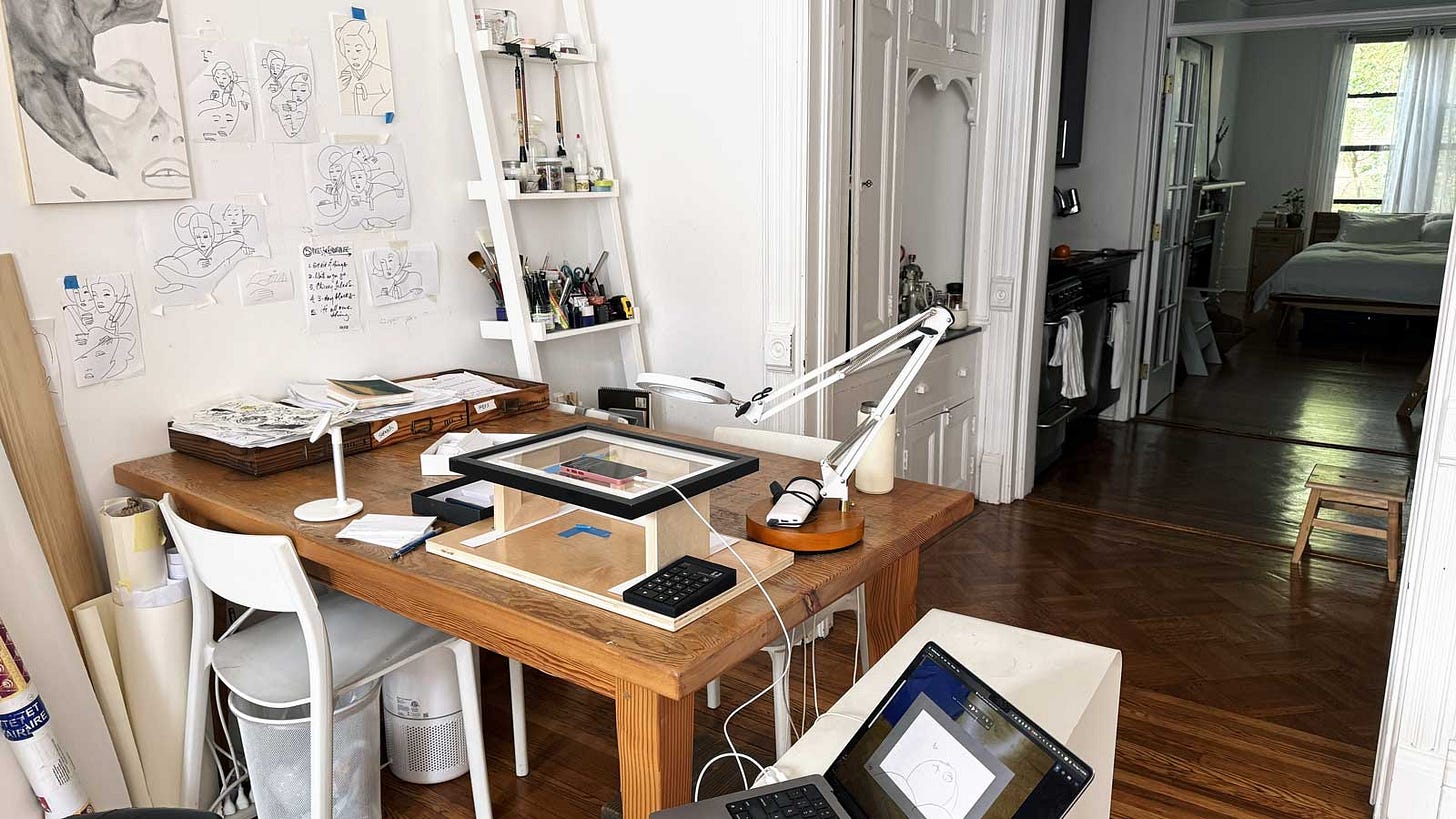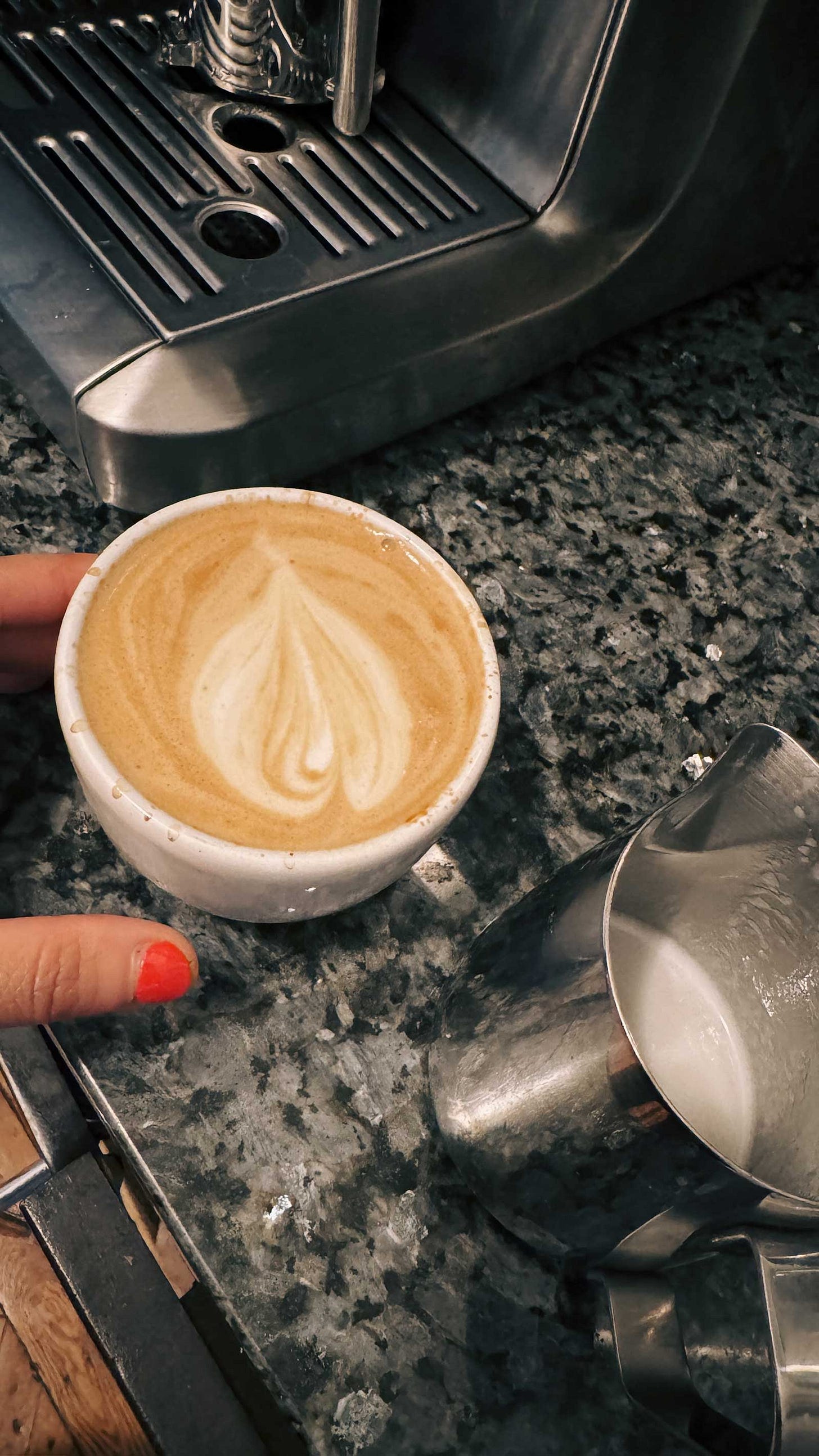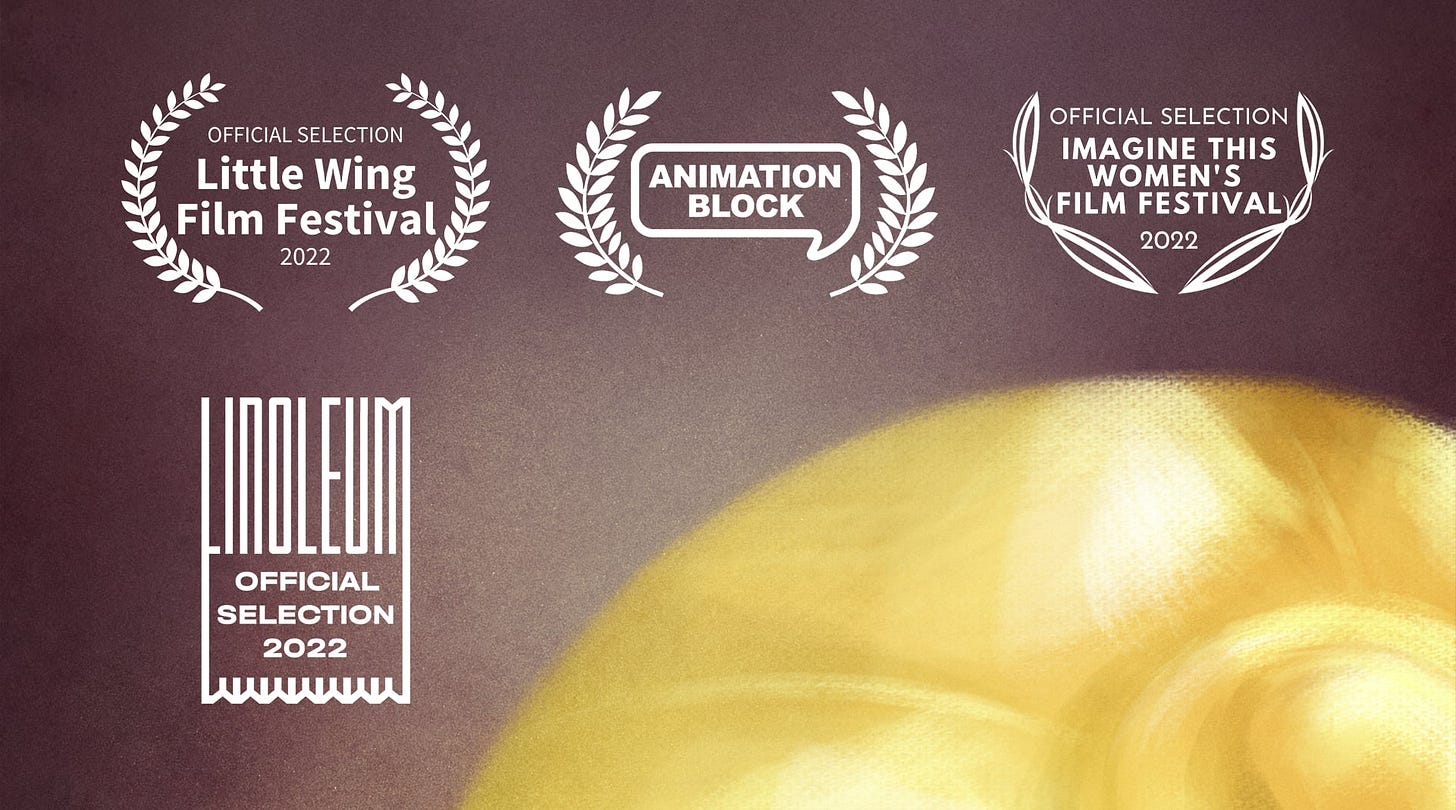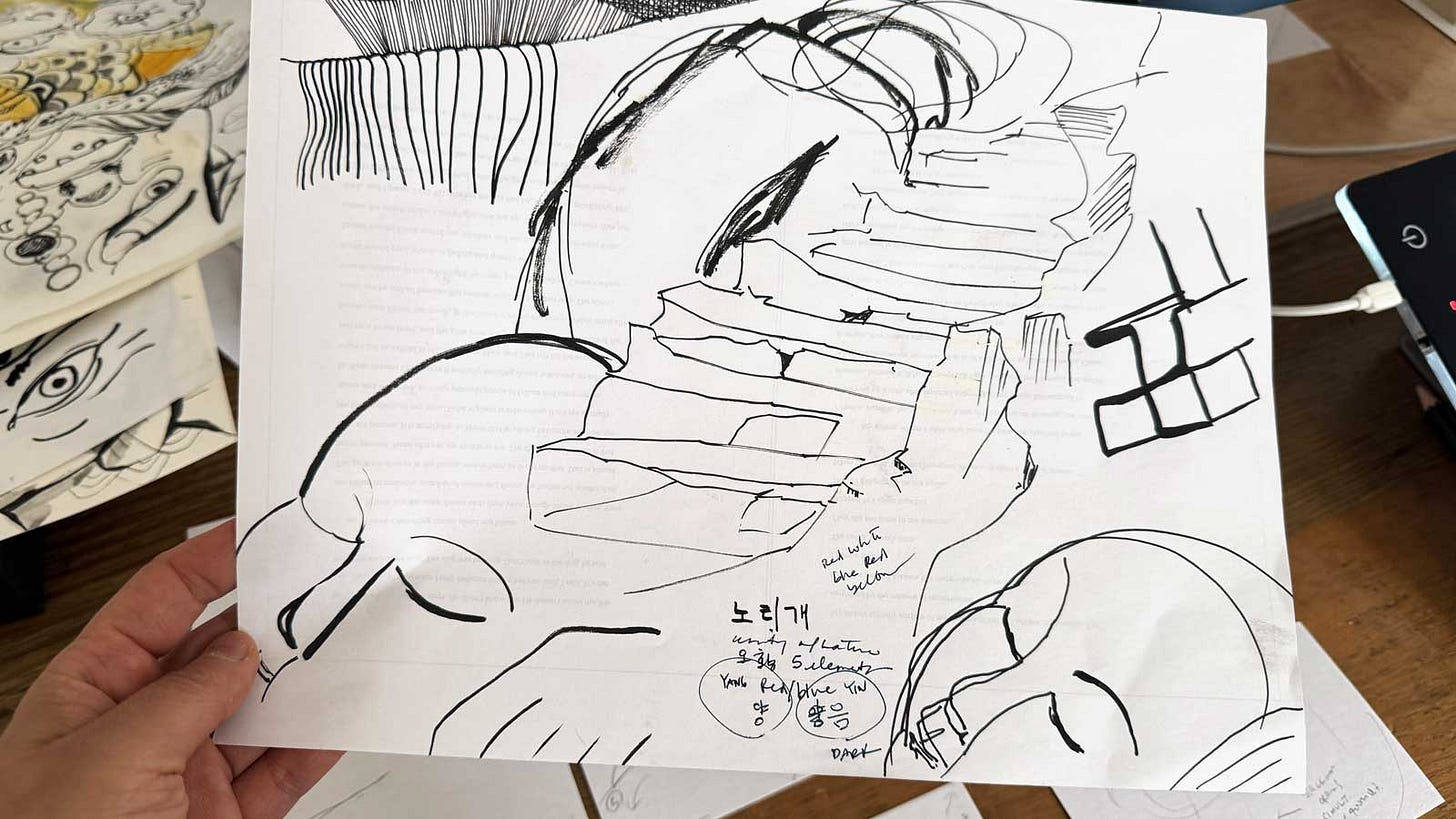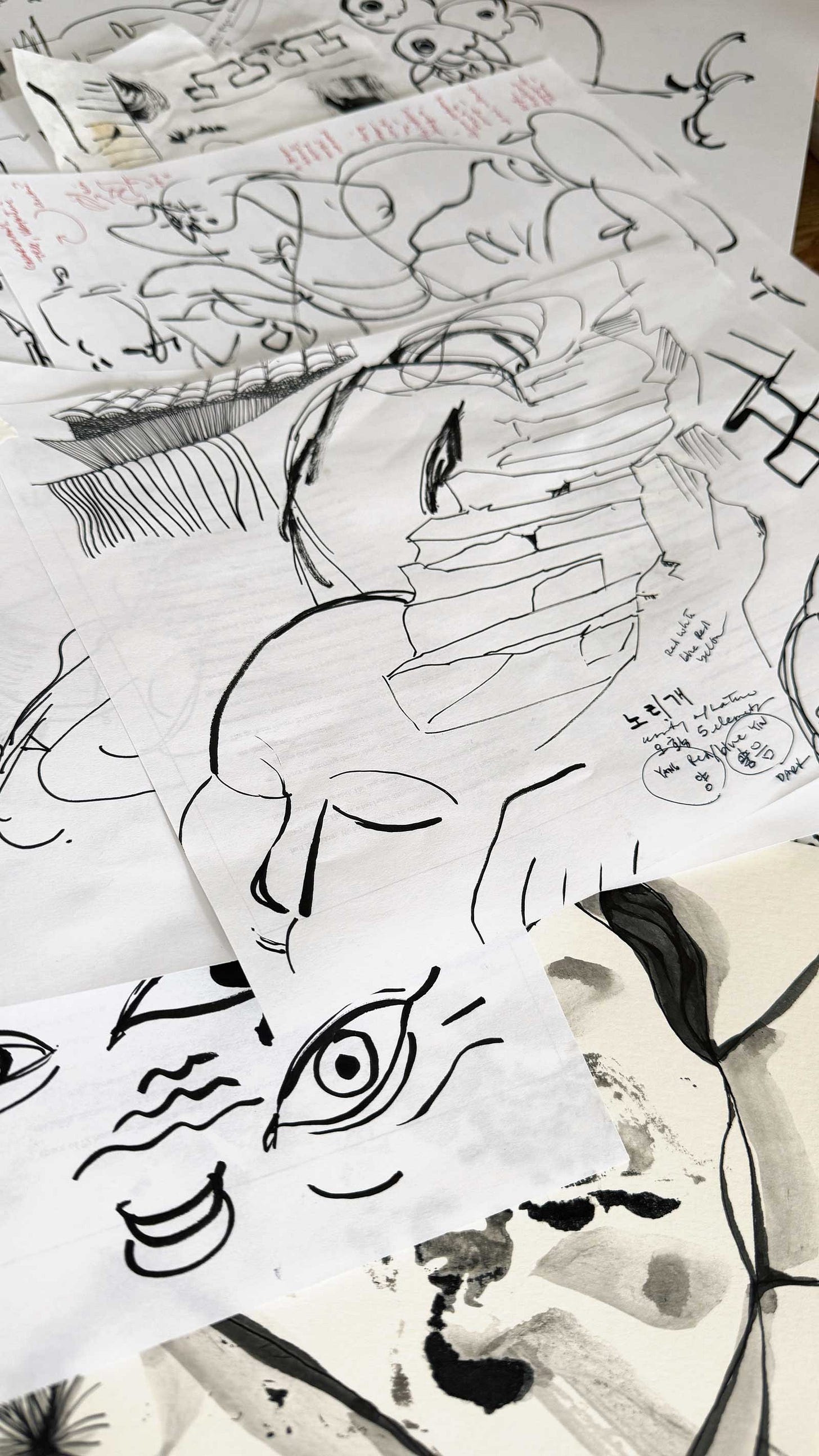100. Value
How we define what's important and why. Celebrating 100 issues! Progress on the primer. Sunflower Cat Harmonica.
Hey, this is the 100th issue of TLB!
To mark the occasion I’m going to talk a little bit about why I write it, and what I think its “value” is for readers and financial investors.
Value is a weird thing to talk about when it comes to newsletters. No one’s asking us to write them; some may not even call it labor. I don’t sell “tips” or “how tos” like on financial or technical newsletters, though I do provide some when it feels organic to do so (e.g., how I shot a film pitch in one week, or how I set up a downshooter for tiny drawings).
I think of TLB as a play by play of what long term commitment looks like. This means that the “value” from reading it might also best be described as something cumulative.
Each issue on its own is a 2-week snapshot. You might see 30 drawings for a film, and out of context, maybe that’s not super exciting. Between projects, there might not be anything resembling production at all.
If you’re on the ride long enough though, you might come to see that these updates—those 30 drawings, a slew of days spent at the river, a bowl of cottage cheese—connect larger points of culmination like words do for a sentence, and eventually, a story. And maybe that’s both interesting and motivating.
The story, speaking of which, so far:
Issue 1 to 26: My animated short Chamoe premiered in the U.S. at BAM. Issues leaned technical, and somewhat more formal, then, but TLB’s structure and ethos remain close to what they were in 2021. TLB was a 2022 Substack Featured Publication.
Issue 27 to 47: As I was exploring ideas for my next film, my father passed away, my mother fell ill, and my relationship of five years dissolved—all around the same time. It was rough. Throughout, I persisted from cul-de-sac to creative cul-de-sac. TLB was a 2023 Substack Featured Publication.
Issue 48 to 58: Finally, a spark. Phonotrope experiments would lead to my next film, 엄마 나라 | MOTHER LAND (trailer).
Issue 59 to 87: Exhibitions, festivals, fellowships. 2024 was a big year: I became a Jerome Hill Artist Fellow (film), a Periplus Fellow (prose), my work went up in a trendy new restaurant near Rockefeller Center in Manhattan. The first essay in my collection was published in The Audacity (read it here, unpaywalled). 엄마 나라 | MOTHER LAND had its world premiere at Brooklyn Film Festival and I was invited to be a guest at Animation Speak/Easy 🤯
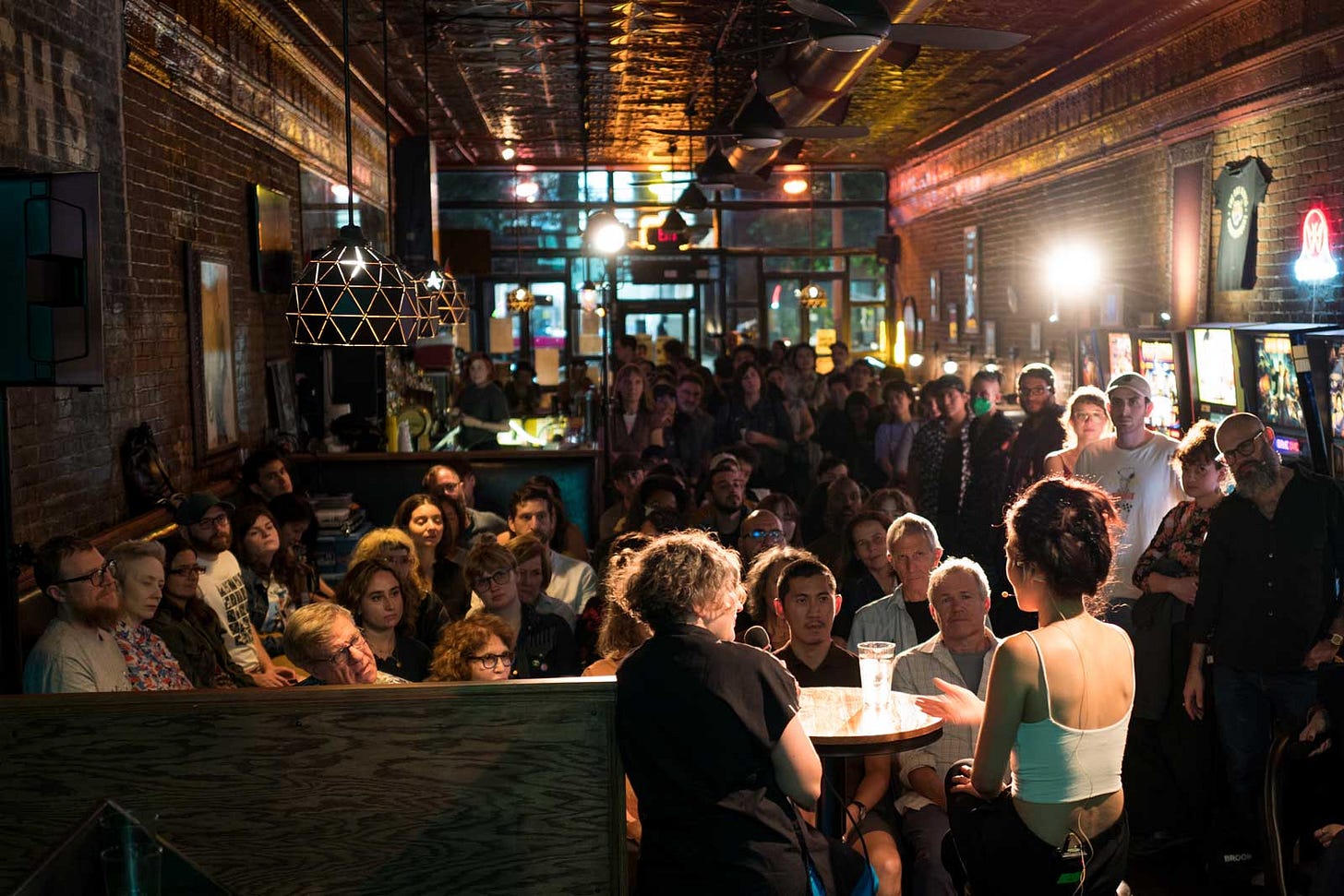
Issue 88 to 100: That brings us to today! I continue to navigate how it’s all one thing and am gearing up for my next film. I was also recently nominated for a moonshot opportunity and filmed a professional pitch for the first time.
You may have noticed that throughout all this, I’ve been promoting TLB less and less. (Substack doesn’t seem to like this 😅. What I don’t like is marketing.) I’d rather share art with intention, with those who believe that slow, curiosity- versus profit-driven work is necessary for a healthier world. I also feel safer sharing early work-in-progress with folks who believe in what I do enough to financially invest in it.
These are the main reasons why paywalls go up. Not because I’m selling something.
Ultimately it’s hard to materially articulate why I think doing work like this, consuming and supporting work like this, is “valuable.” It’s hard to materially articulate the “value” of a lot of of things, much like it’s hard to write a formula for a funny joke, or romantic chemistry.
But I hope highlighting process over product, prioritizing transformation over transaction, contribute to the side of the scale across from fast generation and faster consumption. I hope it’s as much pleasure reading my work as it is seeing it come to life in real time.
Thank you all for reading, watching, witnessing, connecting. Deepest gratitude to sustaining Members for putting their bets down on this side of the scale.
100 feels good; here’s to 100 more ❤️
In the studio
I’m working on the end of a primer1, where a strange night landscape turns out to be on the inside as much as it is on the outside.
It’s the most complicated part of the primer, and I’ll be using it to test relatively complex compositions as well as compositing.
Working primarily with pencil and paper, I’m surprised to find that I’m not missing the conveniences of digital animation much. I recently read this interview with Kohana Wilson on EOF, and what she said resonated with me a lot:
Digital animation has a permanence and uncanny quality that I sometimes struggle with, I think because it can feel hard at times to locate the person within it. This isn’t blanketly true, but I prefer working analog in my own animations for this reason.
In particular, I’m having fun “animating blind,” or drawing without playing through to check timing or fluidity as I go. Seeing an animation come together after a long drawing session feels like Christmas to me:
I’ve been going too fast to (over)think, and that hones dexterity and intuition in its own way. I love it. Not getting hung up on “perfection” makes it so much easier to bring a train of thought into the station, make discoveries, build momentum with an idea.
OK, so—compositing2.
I’m going to draw this final scene asynchronously in layers before compositing (instead of using cels3) because I want to continue on paper with graphite. I also want to avoid going crazy trying to animate multiple flows of movement at the same time.

I’m applying what I learned while animating the first segment of the primer, when I wished that I had animated the hand separately from the rest of the scene. Seeing into the future: more flexibility, less frustration.
Here’s what the first layer of the ending (drawn blind!) looked like in the initial pass—not bad:
After playing it through, I revised the rabbit a few times:
It turned out like this:
It has a different feel; I’ll let it sit before I go with a direction. The beauty of compositing is that I can move onto animating other parts of the scene while I wait. I can refine it independently at any time.
The rest of the issue is for Members:
The primer, end-to-end (about 30s), with sound! It’s astounding how much of a difference music and context make for the story.
Provisions: a shortlist of good things I’ve been consuming, plus NYC gems.
A microessay about a neighborhood curiosity in Harlem.
Everyone else, you’re of course welcome to join in! Otherwise bye for now, and thanks again.
Members, take a look at the primer so far, with sound. For the audio, I’m exploring Pansori, an old form of musical storytelling in Korea. It’s usually performed by a vocalist and drummer. I’m currently using a test track:



